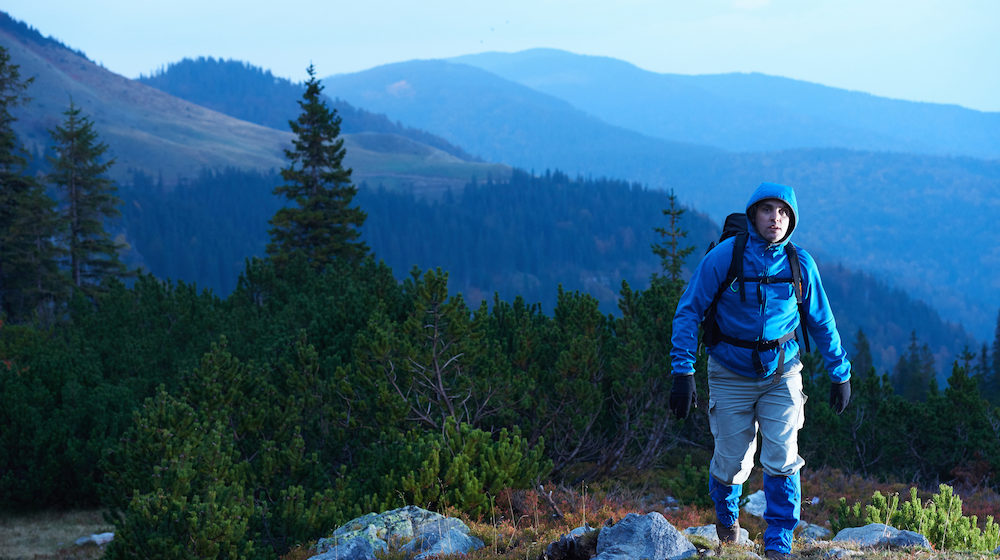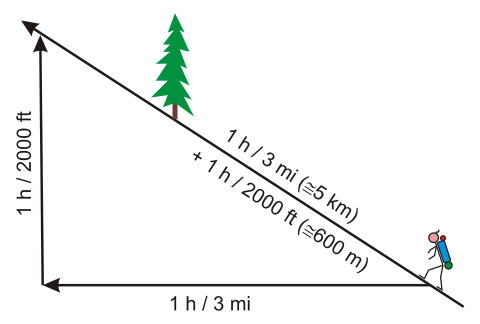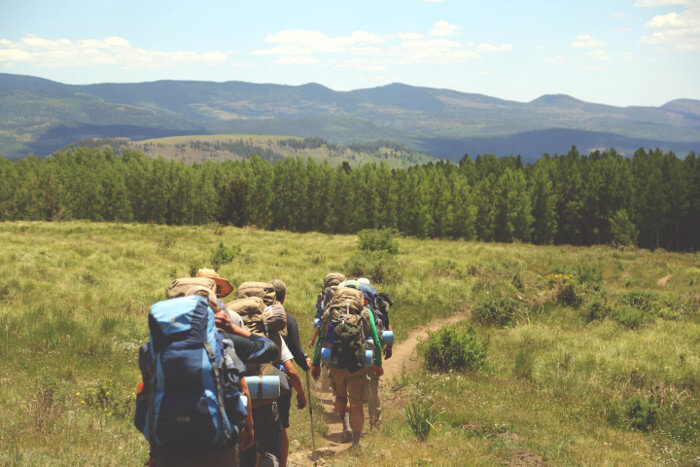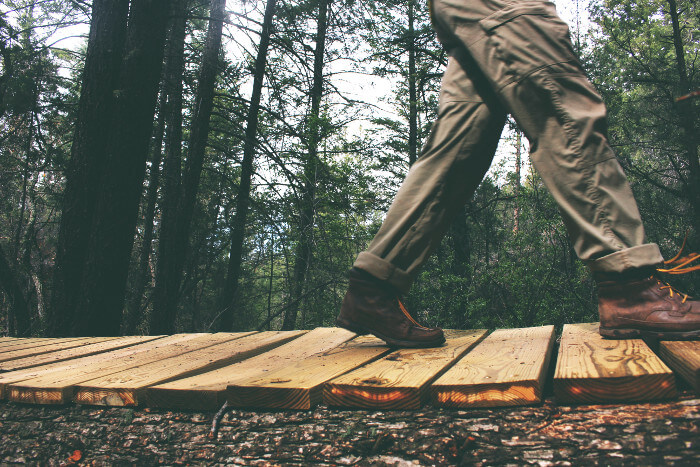
When I first got into backpacking I had not even the slightest clue about figuring out how fast I might travel on the trail. As you plan your first trip one of the first questions that come up is, “where will we camp for the night?” This question and most other itinerary questions can only be answered if you first have a reasonable guess at how far you’ll travel in a day.
More...
Average hiking speed can vary from person to person. Hiking speed changes based on what terrain you’re in. Heck, there are even different ways to calculate it when planning your trip.
So, what is the best formula for hiking speed? How far will you hike in a given day? How long does it take to climb 1,000 feet of elevation?
In today’s article, we’re going to talk about everything that goes into calculating your hiking pace. Saddle up, let’s do this!
Why We Need to Calculate Hiking Speed
Being able to judge hiking speed is critical for planning and safety in the backcountry.
Imagine that you’re planning a trip where you and a partner must hike a certain distance, up over a peak, and down the other side to reach your camp. Getting your timing wrong could mean hitting the peak during likely afternoon storms. Alternately, it could mean never even reaching your intended campsite if you calculate wrong.
Among other reasons, having a roughly accurate guess on your group’s hiking speed is important to manage expectations and safely plan a reasonable itinerary.
Basic Walking Speeds
By far the most accurate way to calculate your own speed is to establish a baseline. Finding your own baseline speed means keeping track of your average hiking speed in various situations over several hikes.
Once you know your own average speed you can really start to get accurate. You’ll want to know your hiking speed for the following various situations:
Unburdened on flat terrain
the average person walks at about 3 miles per hour. Imagine walking down the sidewalk in order to understand this category.
Backpacking on flat terrain
for most people runs in the ballpark of 2 miles per hour on reasonably good trails without tons of elevation gain.
Backpacking on moderate terrain
requires calculations to be made given the amount of elevation gained and lost over a given route.
Backpacking off-trail
ranges between 1 mile per hour and half a mile per hour.
Of course, all of these speeds are rough ballpark guesses because every person and every trail will result in slightly different numbers. However, these numbers are a really good starting point for reference.
Naismith’s Formula

https://en.wikipedia.org/wiki/Naismith%27s_rule
Naismith, an old mountaineer, established a rough rule of thumb that still holds weight in today’s world. This simple formula, or rule, will help you figure out your hiking speeds and distances on your next route.
Naismith said that in order to figure out how long your hiking route will take you simply calculate 3 miles per hour of walking plus 30 minutes per 1,000ft of elevation gained.
This formula is about right for very well maintained moderate trail. Where it falls apart is on extremely aggressive trails or off-trail hiking.
Adapting the Formula
While Naismith did a great deed in handing down his wise formula, it’s a bit limited in scope. In order to handle the various terrain challenges any backpacker will face, we have to adapt the formula a bit.
As a backpacking guide myself with hundreds of nights experience guiding groups, I’ve modified the formula to a more accurate personal tune.
When guiding groups or clients I use the following variation of Naismith’s rule:
One big oversight I see all too often is people failing to add time for downhill walking. Descending too quickly can be bad on your knees (I would know, I blew a knee out on the AT doing just that). Plus, some descents are just outright challenging and force us to slow down.
Hiking Speed Calculation Examples
To put things into perspective for you, let’s go through a few examples. These examples assume that you already know how far you’re hiking, how much ascent you’ll have, and how much descent you’ll have.
To find out your ascent and descent you’ll have to count contour lines on a topographic map. Today, however, there are several pieces of software that can help with this such as Gaia GPS or CalTopo among others. Using map software can dramatically speed up your data gathering and route planning process. Shop around until you find the right software for you.
Flat Trail Example
Here’s the first example to get you started.
Let’s say you’re planning a hike on a well-maintained trail in central Ohio. It’s flat as a pancake and you need to cover 9 miles. At the very end, there is a 500-foot gradual climb. Additionally, you won’t be carrying any weight besides a small water bottle and a granola bar (unburdened).
- 1Calculate your base walking speed
9 miles divided by 3 miles per hour = (9/3) = 3 hours - 2Add time for the ascent
500 feet of ascent at 45 minutes per 1,000 = (.5 * 45) = 22.5 minutes - 3Add time for the descent
There is no descent on this hike
So, once we do the math we end up with a hike that should take us about 3 hours and 23 minutes.
Off-Trail Example
Okay, we’re hiking off-trail in, say, Utah, Wyoming, or Colorado. It’s 6 miles worth of hiking with a cumulative 2,400 feet of elevation gain and 1,800 feet of elevation loss.
- 1Calculate your base walking speed
6 miles divided by 1 mile per hour = (6/1) = 6 hours - 2Add time for the ascent
2,400 feet of ascent at 45 minutes per 1,000 = (2.4*45) = 108 minutes - 3Add time for the descent
1,800 feet of descent at 20 minutes per 1,000 = (1.8*20) = 36 minutes
Add all those together ((6*60)+108+36) and you get 504 minutes which is equal to 8.4 hours of hiking.
Appalachian Trail Example
Most parts of the southern section of the AT are hilly or mountainous, but the trail itself is quite wide, flat, and well maintained. Let’s take a look at some numbers that reflect a situation such as this.
You’ve got a 14-mile hike with 2,200 feet of elevation gain and 3,000 feet of descent. All of it is on the trail.
- 1Calculate your base walking speed
14 miles divided by 2 miles per hour = (14/2) = 7 hours - 2Add time for the ascent
2,200 feet of ascent at 45 minutes per 1,000 = (2.2*45) = 99 minutes - 3Add time for the descent
3,000 feet of descent at 20 minutes per 1,000 = (3*20) = 60 minutes
In this case, we get 9 hours and 39 minutes worth of hiking!
Other Considerations

There are several other things to keep in mind when calculating your hiking speed. Some personal factors such as fitness level, acclimatization (to altitude), and pack weight can all affect hiking speed.
If you know that you’re a new backpacker with a low(er) fitness level you might add on more time for ascent and descent.
Maybe you know that you’re a fit runner and you’re carrying an ultralight backpack. You could probably take some time off of your calculations to personalize them for yourself.
It’s a good idea to account for 10-15 minutes of a rest break. For new hikers or those who prefer to go slower, 10 minutes of rest per hour isn’t unusual. Those who want to go faster may account for 10 minutes per two hours or 5 minutes per hour.
Unless you’re an extreme athlete with lots of experience and training, I advise against zero rest breaks.
Other factors to watch out for are adding in time for lunch breaks, rest stops, and water refills. For lunch breaks, I always factor at least 30 minutes because it’s good to stop and smell the flowers, as it were. Don’t forget, you’re out there to enjoy the trail so remember to slow down and take breaks when you need to.
Calculating Your Hiking Speed
By far the best way to calculate your own hiking speed is to use a phone GPS or smartwatch.
The Garmin Fenix currently takes the top place on my list of the best hiking watches. Use the built-in GPS and features to easily track your hiking distance, speed, and pace. I recently got to use one on a trip to Wyoming’s Winder River range and was really impressed!
If you don’t have a smartwatch, the next best option is your phone. There are many apps out there for tracking speed and distance, but for planning and executing backpacking trips Gaia is by far my favorite. It has a great website, too for pre-trip preparations.
One key consideration is to track your pace on three known trail types:
Try to track yourself for a few hours of each type of hiking at a natural pace (no cheating and speeding up just so it looks good on the numbers!). Then you can compare your speed to the speed you would have expected to get from using Naismith’s formula.
Understanding Terrain vs Real Conditions

https://commons.wikimedia.org/wiki/File:Holyoke_Range_map-en.svg
When it comes to reading a map, anyone can learn to translate contour lines into a 3D map. What we can’t always do, however, is predict exactly what kind of terrain will be on the ground.
With a standard topo map, we can use measuring tools to figure out exactly what the slope angle, or pitch, is going to be in a given location without ever going there ourselves. This is handy for trip planning.
Where we often run into problems, however, is in predicting the ground conditions at said location.
For instance, just the other week I was doing some off-trail backpacking in Wyoming. We knew there were three routes from one campsite to the next. Two of those routes were off-trail routes we had pre-planned by reading the topos before going. Lastly, we had an on-trail backup plan in case the other routes were no good.
We left the trail and climbed to an alpine lake to set camp. After setup, we took our peak bags and climbed the saddle to scout one of the off-trail options for the following day.
When we got to the saddle and looked at the route we had planned on the map we found a nearly 20′ high snow cornice holding out at the top (in late August). For us, that meant it was a no go. However, the terrain itself was viable.
Another time I attempted an off-trail route just to get blocked out by an avalanche slide path. Although the terrain itself was easily hike-able, a huge swath of trees and debris made it impossible so I had to return to the trail and modify my plans.
How Many Hours Per Day Can I Hike?

Alright, so we figured out how to calculate hiking speed. That’s all well and good, but is 12 hours of hiking a reasonable expectation? Maybe 4 hours of hiking is better?
Being able to calculate hiking speed is critical to pre-trip planning but without any reasonable basis for expectations, it’s hard to guess what’s good and what’s bad.
First, figure out how much daylight you can expect to have in the location you’ll be traveling. This depends on many factors including the time of the year. Try looking up sunrise and sunset times near your location.
Additionally, you’ll want to think about things like tree cover or mountains blocking light. In a valley with steep peaks around you, direct sunlight can be delayed an hour or more from actual sunrise.
For beginners, it’s probably best to shoot for about 5-6 hours of hiking per day during 3-season conditions.
Remember that after you wake up the process of breaking camp can take an hour or two for beginners. Finding a campsite, setting up your shelter, and making dinner can take another hour or two at the end of the day.
These distances should result in a daily hiking time of 5-6 hours of travel for most hikers. Of course, the weather, trail condition, your physical condition, and many other factors will affect these numbers. Use them only as a rough ballpark when starting out so you have some idea of what to expect.


